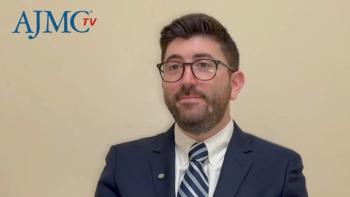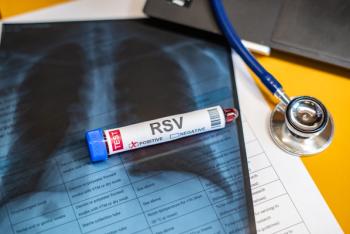
Behind the Scenes of Multiple Myeloma Care: A Pharmacist’s View With Kelley L. Julian, PharmD, BCOP
Kelley L. Julian, PharmD, BCOP, discusses optimizing myeloma care, addressing barriers in access to intravenous immunoglobulin and innovative therapies at Huntsman Cancer Institute.
At the recent regional oncology-focused Institute for Value-Based Medicine® evening in Salt Lake City, Utah, Kelley L. Julian, PharmD, BCOP, participated on the panel discussion, “Collaborating With Your Pharmacist to Optimize Value in Oncology.” Speaking from the perspective of a pharmacist who is an expert in hematology/
Julian also is PGY2 oncology pharmacy residency program director and supervisor for the bone marrow transplant group at Huntsman Cancer Institute of the University of Utah.
This transcript was lightly edited for clarity; captions were auto-generated.
Transcript
Can you highlight key points from your discussion on optimizing value in oncology care?
We discussed access to care, and we discussed the barriers around that, which you could really go on about for an hour or 2. For me, I touched on in myeloma, specifically IVIG [intravenous immunoglobulin], which is a supportive care therapy, and just how we're seeing denials giving it at Huntsman proper in place of giving it at an infusion center, which is a benefit to the insurance and the payer vs even via home health through the patient's home, which requires a lot of logistical work around. What nurse can go out there? Who are they contracted with through the payer?
We don't always have that information readily available, and so it does require a lot of time and resources, kind of on the front end, to figure that out. But things like IVIG are super important for the innovative therapies that we're providing, like bispecifics and CAR T [chimeric antigen receptor T-cell therapy] to prevent infection. It's meaningful work. It's just, how do we divide and conquer? What's the pharmacist’s role vs the case manager vs the nurse vs the provider, things like that. All things that need to be worked through.
As a pharmacist, can you discuss some of the top challenges you encounter when trying to deliver timely care to your patients who have multiple myeloma?
The physician is kind of the top, and so this is like a lot of behind-the-scenes work. They say, “Okay, we need IVIG,” and then there's a lot of magic that happens in the background. Barriers specific to the pharmacist role are, how do I find out…I know the insurer that this patient has, but then how do I find out who they're contracted with? That was the initial barrier that we recognized in my practice, and we worked with our case manager, our outpatient case manager, to get that list. From there, it's like, okay, what are the numbers that we call? Who do we contact to get the ball rolling on seeing what that prior auth looks like, and in that communication, do I have to fax the orders? Can they take a verbal? How much time is it on the phone? All these things.
Our process at Huntsman is unique in that we have our own home infusion suite that is separate from Huntsman proper, and so we're always trying to keep the patients under our umbrella if we can, because then if the IVIG therapy, for example, is given in our home infusion suite, I can see those details. I can see when it was given, what rate, and I can see the notes around that. That's kind of a big deal for us. That's my first stop when I can't give it in my major main infusion center, to go to the infusion suite, which has a different site of care and has different billing associated with it. Then if I can't do that, then, okay, I'm going through CVS Specialty or Coram, Accredo, things like that—and that takes a lot of time.
The last barrier I'll mention is just the time involved, because you may send off the orders and then you don't hear anything for a week, and it's like, did they get them? Did they forget? Do you have to call and follow up? Sometimes it's me, and sometimes they delegate to the nurse. It really just depends on, am I in clinic, or what's the continuity there? It's kind of a lot, but like I said, it's important work.
Newsletter
Stay ahead of policy, cost, and value—subscribe to AJMC for expert insights at the intersection of clinical care and health economics.













































